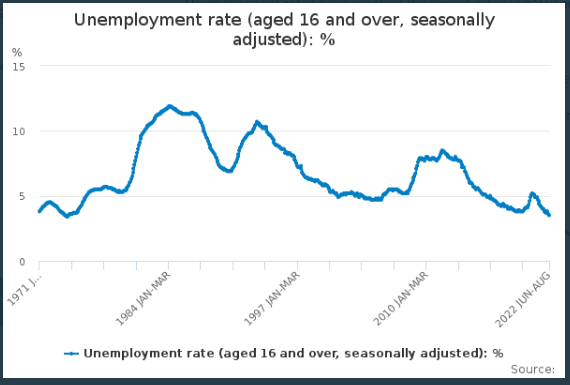UK unemployment rate lowest since 1974 - how does Liverpool compare?
and live on Freeview channel 276
New data released today (October 11) by the Office for National Statistics (ONS) has revealed that the unemployment rate dropped to 3.5% in the three months to August.
At the lowest unemployment rate since 1974, the number of people looking for work, the number of job vacanices also fell.


National data
Advertisement
Hide AdAdvertisement
Hide AdAccording to ONS, in July to September 2022, the estimated number of vacancies fell by 46,000 on the quarter to 1,246,000, this is the largest fall on the quarter since June to August 2020. Despite three consecutive quarterly falls, the number of vacancies remain at historically high levels.
The economic inactivity rate (those not looking for work) increased to 21.7% between June and August, with those inactive because they are long-term sick hitting a high of nearly 2.5 million.
Despite average total pay excluding bonuses increasing by 5.4%, when compared with the rate of inflation, this is real term pay cuts of 2.9%.
The gross domestic income for a household was £21,433 (per head).
Liverpool data
Advertisement
Hide AdAdvertisement
Hide AdLiverpool’s unemployment rate for the same period was recorded as 4.5%, 1% higher than the national average.
The area also had 7% more people working in public sector jobs, rather than private sector. In addition, the average domestic income of a Liverpool resident was drastically lower than the national average, at £15,673 - almost £6,000 less.
Economic activity for Liverpool was 22.4%, with the ONS data suggesting that the main reason for this was long-term sickness and student status.
Comment Guidelines
National World encourages reader discussion on our stories. User feedback, insights and back-and-forth exchanges add a rich layer of context to reporting. Please review our Community Guidelines before commenting.
